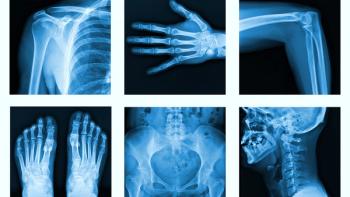
- BioPharm International's BP Elements, December 2022
- Volume 1
- Issue 12
Leveraging Artificial Intelligence and Human Know-How to Accelerate Drug Discovery
Through the integration of human expertise, artificial intelligence, and automation robotics, bio/pharma companies can more efficiently target drug discovery efforts with bigger payoff.
Cell- and gene-based therapies, while still emerging, have great potential to fulfill high unmet patient needs across a broad range of disease areas. These therapies may have the potential to transform patients’ lives and cure diseases in which there are no or few treatments by addressing the root cause rather than the symptoms. Using an approach that combines a deep understanding of disease biology with innovative technologies and versatile treatment modalities (e.g., Astellas’ Focus Area Approach), bio/pharmaceutical companies can make a meaningful difference for patients.
Astellas’ R&D is often focused on therapeutic drugs for rare diseases with small patient populations, presenting challenges to sample collection and limiting the potential for drug discovery through traditional approaches. Against this backdrop, a solution came to light with the advent of technology that utilizes induced pluripotent stem cells (iPSCs) to differentiate cells into target cells (1).
iPSC research with Mahol-A-Ba
Drug discovery through iPSCs is difficult due to the nature of the cells themselves and the availability of experienced researchers. iPSCs are extremely difficult to handle, and though their ability to change into various cell types is advantageous, they can also alter their state and differentiate into completely different cells based on minor differences in how they are handled by researchers. Culturing and differentiating the cells requires experienced researchers with subject matter expertise to evaluate whether the cells have differentiated into the target cells and whether the compound has the desired pharmacological effects. There are very few of these researchers worldwide, and the possibility of human error remains alongside a limitation on experimentation time.
Astellas’ “Mahol-A-Ba” platform is a proprietary human-in-the-loop (HITL) drug discovery approach that integrates human expertise, artificial intelligence (AI), and automation robotics (see Figure 1). Leveraging the Maholo LabDroid (Robotic Biology Institute)—a robot that had already been introduced at Astellas’ Tsukuba Research Center in Japan to utilize iPSCs for drug discovery—has allowed the company to overcome challenges associated with iPSC drug discovery, including handling, culture and differentiation, experimentation time limitations, and availability of skilled researchers.
How Mahol-A-Ba works
Astellas’ Maholo robot conducts cell culture and differentiation in its role as the "expert arm," while an "expert eye" robot, nicknamed “Screening Station” (Beckman Coulter, RORZE), and a benchtop high-content analysis system (Cell Voyager CQ1,Yokogawa Electric) enable high quality and uniformity in cell assay system screening. The activity of differentiated cells and their pharmacological effects are then evaluated. The vast amount of data that are produced is analyzed by the deep learning function of a high content analysis software (CellPathfinder, Yokogawa) and comprehensively judged by the researchers to feed back into the platform for learning and improvement. Mahol-A-Ba has made it possible to reproduce the biology of even rare diseases in vitro, enabling researchers to verify hypotheses about drug targets, confirm pharmacological effects of drug candidates, and elucidate mechanisms of action.
Astellas co-developed the “expert arm” with robotic makers and was able to provide its experience in pharmaceutical research and development. The execution of the computer program to run the robotic system required a tiny adjustment of the x-z-y axis of dynamics. While there is much trial and error with the programming, once successfully optimized the robotic control system takes human error and inter-individual variability out of the equation.
A part of expert eye aspect, the benchtop high-content analysis system (Cell Voyager CQ1) is connected to an automated assay robot to observe cellular changes day and night, and a large amount of data is stored and analyzed by AI to predict quantitative changes in cell differentiation over time without human operation (see Figure 2). This is an achievement that has not been reported before and is the first system of its kind in the world, built with the combined skills of Japanese mechanics makers. By utilizing expert eye, researchers can now concentrate on the other important aspects that require more pragmatic thinking rather than the grueling task of manually observing and counting the number of cells with the human eye. The cell counts that would take a month if done by one person can be completed within a day by the expert eye.
Benefits of Mahol-A-Ba
Through the accumulation of the efficiency gains described above, Mahol-A-Ba enables researchers to conduct experiments more efficiently than before. The full automation of experiments has also created a more efficient workflow and reduced the possibility of human error. Researchers no longer need to do the routine work between experiments, such as changing plates, which leaves more time for data analysis, future experiment planning, and the development of mid- to long-term strategies and plans.
The type of digital transformation that Astellas aspires to implement is not one where technology replaces people. Instead, the company’s approach is one where digital technology works alongside employees, each complementing the other in areas of mutual strength: AI and robots will be responsible for collecting and analyzing necessary data and engaging in repetitive tasks, and experts in their respective fields will utilize these data to spark ideas that only the human brain is capable of and inspire shifts and directional decisions based on strong volition.
How to build a Mahol-A-Ba-like approach
Mahol-A-Ba is an Astellas-specific approach – not an off-the-shelf process – but the company’s experiences can inform the creation of a similar approach in other research organizations. In addition to a robot, key components include experienced researchers, workflow management, security software, and computer networks.
A common skill the company seeks across all small-molecule and cellular drug discovery researchers is experimental experience. Many failures and successes through experimentation must be utilized to master Mahol-A-Ba. Astellas’ HITL researchers are synthesis researchers who are familiar with the use of the AI robot while experimenting with actual synthesis. In addition, the company’s Mahol-A-Ba researchers are skilled in iPS cell culture and are users of the AI robot. Mahol-A-Ba researchers should have basic knowledge of robotics and programming about the lab automation processes, and they can work with experts from machine manufacturers to acquire mechanical and control system engineering skills.
Mahol-A-Ba requires workflow management software (Green Button Go, Biosero) that integrates the complex lab automation processes, as well as network-attached storage servers and network security systems to retrieve and analyze large amount of data, especially for remote access. In an era when remote research is becoming more and more possible, it will be important to ensure transparency and strengthen information security.
Achieving the goal: valuable medicines for patients
With Mahol-A-Ba, Astellas is focused on discovering breakthroughs in the field of cell-based therapies. The use of AI and robotics is a new approach to accelerate the speed of R&D, reduce costs, and improve the quality of drugs, enabling the company to do things that were previously impossible with human power alone. Furthermore, because its researchers can operate Mahol-A-Ba remotely, Astellas is currently building an environment that will allow researchers worldwide to apply their ideas to drug discovery and research regardless of their location.
The name Mahol-A-Ba derives from the ancient Japanese word "mahoroba," which roughly translates to "utopia" or "spiritual home." In Mahol-A-Ba, the "A" represents "Astellas," and the "Ba" refers to "place." The overarching meaning is “an optimal place for Astellas to utilize Maholo” – a concept that aligns with the company’s goal to deliver treatments to patients as quickly as possible through AI, robot-assisted digital transformation, and the necessary power of people. Mahol-A-Ba is the latest example of how Astellas is leveraging an effective mix between researchers, AI, and robots to create value for patients.
Reference
1. M. Sasamata, et al., SLAS Technology 26 (5) 441–453 (2021).
About the Author
Kenji Tabata, PhD,is senior vice-president, head of Discovery Intelligence, Applied Research, and Operations at Japan-based pharmaceutical company Astellas.
Articles in this issue
about 3 years ago
A Deep Dive into Particle Engineering as a Drug Delivery Toolabout 3 years ago
Merck and BigHat BioSciences Partner on Drug Discovery ProgramsNewsletter
Stay at the forefront of biopharmaceutical innovation—subscribe to BioPharm International for expert insights on drug development, manufacturing, compliance, and more.




